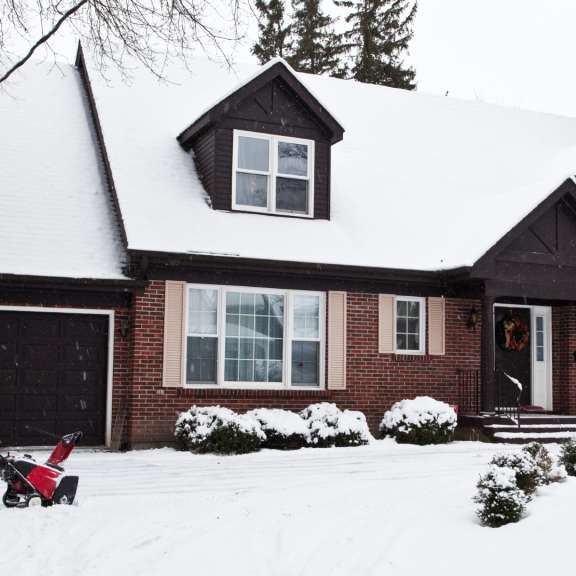
Winterize Your Home to Prevent Insurance Claims This Winter
Winter brings beauty, but it also brings risks to your home. Frozen pipes, ice dams, and slippery sidewalks can lead to costly damage and insurance claims. The good news is that most of these problems are preventable with a little preparation. Winterizing your home keeps your family comfortable and can help you avoid unnecessary insurance headaches and expenses.
When to Start
The best time to winterize is before the first hard freeze in your area, typically in late fall. It’s also wise to check again after major storms and mid-winter to catch any emerging issues.
Protect Your Pipes
Frozen pipes are one of the most common and expensive winter problems. Insulate any exposed pipes in basements, crawlspaces, attics, garages, or along exterior walls. Seal gaps where cold air might sneak in, especially around utility openings. Drain and winterize your exterior faucets and sprinkler systems, and make sure you know where your main water shutoff is located. If you’ll be away during the winter, set your thermostat no lower than 55°F and consider installing smart leak detectors that can alert you to a problem before it becomes a disaster.
Maintain Your Roof and Gutters
Your roof and gutters are your home’s first line of defense against snow and ice. Clean them out to make sure melting snow and ice can drain properly. Check your roof for any loose or damaged shingles and repair them before the first snowfall. Make sure your attic has proper insulation and ventilation, as this helps prevent ice dams from forming. If you have a complex roofline or have experienced ice-dam issues in the past, consider hiring a professional to inspect your roof.
Check Your Heating System
Your heating system works hardest during the coldest months, so make sure it’s ready. Schedule a furnace or boiler service to ensure it’s running efficiently and safely, and replace any filters. Test your smoke and carbon monoxide detectors and replace the batteries. If you use a fireplace or wood stove, have the chimney cleaned and inspected, and keep a fire extinguisher nearby just in case.
Seal Out the Cold
Look for drafts around doors and windows and seal them to improve efficiency and comfort. Adding weatherstripping and caulk can make a big difference in keeping your home warm and reducing your heating bills. Cover or close foundation vents if that’s appropriate for your region, and insulate attic hatches or any pipes running along exterior walls.
Prepare the Exterior
Before winter storms arrive, trim back any tree branches that hang over your house or power lines. Store or secure patio furniture, grills, and outdoor equipment so they don’t get damaged or become projectiles in strong winds. Check your roof flashing and chimney caps for gaps that could lead to leaks.
Keep Walkways Safe
Safety outside your home is just as important. Repair cracked or uneven walkways before freezing temperatures arrive. Keep a supply of ice melt, sand, and a sturdy shovel on hand, and make sure your exterior lighting is bright enough to keep paths visible and safe at night.
Build an Emergency Kit
Winter storms can lead to power outages or temporary isolation. Prepare an emergency kit with flashlights, extra batteries, blankets, bottled water, nonperishable food, and a carbon monoxide detector. If possible, consider adding a remote water-shutoff valve or smart leak detectors near high-risk areas like your water heater, sump pump, or main line.
Don’t assume winter damage won’t happen to you. The majority of winter-related home insurance claims come from preventable issues. Focus on plumbing and roof maintenance first, since those are the most costly areas to repair. Small, simple actions like adding pipe insulation or cleaning out gutters, often have the biggest payoff.
Winterizing your home is a small investment of time and effort that can prevent major problems down the road. By preparing early and keeping good records, you’ll protect your home, lower your risk of claims, and enjoy a safer, warmer, and more peaceful winter season.
